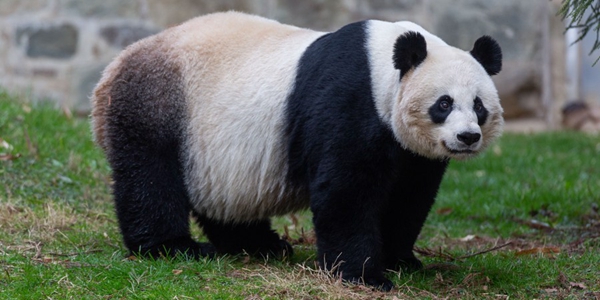Mei Xiang trains cub's ability to stay on floor: U.S. giant panda curator
 0 Comment(s)
0 Comment(s) Print
Print E-mail Xinhua, August 28, 2020
E-mail Xinhua, August 28, 2020

Mei Xiang is training her newborn cub's ability to stay on the floor, Laurie Thompson, assistant curator of giant pandas with the Smithsonian's National Zoo here, said on Thursday.
In an update, Thompson wrote that after approaching the doorway of her den several times to test her cub's reaction to being placed on the floor, Mei Xiang twice left the den to get a drink of water early this morning.
"Each time, she only spent about one minute away," the curator said. "Upon her return, Mei Xiang immediately picked up her cub and cradled it."
The moves offered Panda Cam viewers great close-ups of the growing cub.
Newborn giant pandas rely on their mothers for warmth, since they have little fur and cannot regulate their own body temperature. During the first few days of a cub's life, a mother giant panda forgoes eating and drinking to stay with her offspring.
"Now that Mei Xiang has started leaving her den to drink, this is a positive sign that the cub can stay warm on its own for short periods," Thompson noted. "Over the next few days, we expect Mei Xiang will gradually spend more time away from the den."
The curator said the giant panda team will conduct a quick exam of the cub when Mei Xiang feels comfortable leaving it for a few minutes while she eats bamboo in her indoor habitat.
"Mei Xiang's behavior will dictate how much time keepers have with the cub, but we hope to do a quick check of its body parts, obtain its weight and measurements, and take a cheek swab, which will allow us to analyze the cub's DNA and determine its sex," she added.
Mei Xiang, 22, gave birth to the cub on Aug. 21, the seventh since she and male giant panda Tian Tian began living in the zoo in 2000. Three of her cubs have survived to adulthood.
The female giant panda was artificially inseminated in March this year with frozen semen collected from Tian Tian. Veterinarians confirmed evidence of a fetus on an ultrasound earlier this month.
Tian Tian turned 23 years old on Thursday and received a panda-friendly fruitsicle cake and enrichment boxes filled with his favorite treats, according to the national zoo, which has a decades-long partnership with Chinese scientists and curators on conserving giant pandas.
The zoo, located in Northwest Washington, D.C., is part of the Smithsonian Institution, a renowned museum and research complex that has 19 museums, nine research centers, and affiliates around the world.






Go to Forum >>0 Comment(s)